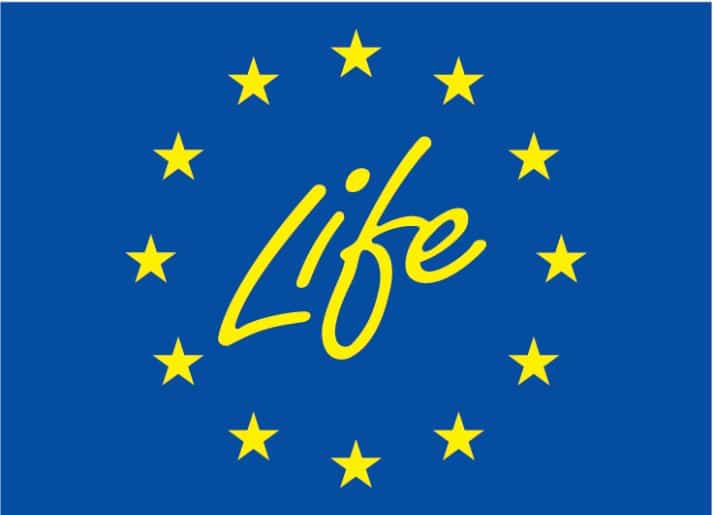Carbon Border Adjustment Mechanism: raising climate ambitions and ensuring fair competition
This is the third installment of the Topic of the Month: Is emissions trading fit for Europe’s net zero objective?
On 16 May 2023, the regulation of the Council of the European Union and European Parliament implementing the Carbon Border Adjustment Mechanism (CBAM) came into force. Under the ‘Fit for 55’ package, the EU Emission Trading System (ETS) has become an essential tool for the EU to reach its 55% greenhouse gas (GHG) emission reduction target by 2030 and achieve carbon neutrality by 2050.
The increasing cost of GHG emissions under the EU ETS might place companies covered by the system at a competitive disadvantage in international trade compared to producers in jurisdictions without carbon pricing. This disadvantage may incentivise EU companies to relocate their production to regions with less stringent climate policies, diluting the environmental efforts made by the EU. This process is referred to as “carbon leakage“.
To prevent carbon leakage and promote global climate ambition, the EU introduced the CBAM, a tariff on carbon-intensive goods imported from abroad. Under the CBAM, EU importers need to buy carbon certificates corresponding to the embedded emissions in their products unless the exporting jurisdiction has an equivalent carbon pricing system in place. The cost of certificates depends on the carbon price in the EU ETS and any difference with the carbon price paid in the exporting jurisdiction.
Although the high EU standards have added legitimacy to the EU’s defence of CBAM as a climate measure complementary to the EU ETS, many trading partners continue expressing opposition towards its restrictive nature. This short article aims to present some major challenges in the CBAM’s implementation and discuss potential solutions.
Emission Data Collection
On Tuesday 13 June, the European Commission launched a consultation on a draft implementing regulation on CBAM. A robust CBAM requires accurate data on the embedded emissions in imported products.
Given the difficulty of collecting and verifying data in third countries, the CBAM needs to strike a balance between the transparency of data and simplification of the monitoring, reporting and verification process (MRV).
One feasible approach would be to start from the data in the EU. An average value of the embedded emissions for similar goods in the EU would be set as the default emission liability benchmark for imported products. If importers want to demonstrate that the embedded emissions in their products are lower than the EU benchmark, they bear the burden of proof. They need to verify the actual embedded emissions in their products from an independent third-party auditor accredited by the EU. In case of doubt, Member States’ customs can order an investigation into the imported products.
The use of the EU value as an emission benchmark ensures that foreign producers do not face a higher emission cost than domestic producers. Such a design could help combat the framing of CBAM as a protectionist measure. While delegating the MRV responsibility to third-party verifiers would significantly reduce the EU’s administrative burden, the EU needs to set unified standards for MRV procedures. More importantly, as the MRV process takes place outside the EU’s jurisdiction, the EU should carefully monitor potential collusion between importers and verifiers via customs officials.
A second feasible approach would be to calculate country-specific average embedded emissions in goods and use them as the default. In this case, cooperation and communication with trading partners will be essential to form a shared understanding of the fundamentals of carbon accounting. The EU would need to harmonise data collection and calculation methodologies across countries and ideally delegate the specific implementation to an independent international body.
This methodology consultation with trading partners could not only ease the data collection process in foreign jurisdictions but also promote an understanding of the fairness of CBAM. More importantly, as several US senators have recently introduced a bill to pave the way for America’s first carbon border tax, being the forerunner in setting carbon emission accounting standards provides an opportunity to strengthen the EU’s leadership in incorporating climate goals into trade policy.
Implicit or Explicit Pricing
To avoid double taxation of emissions in products, the CBAM offers exemptions for imports from jurisdictions with equivalent carbon emission costs compared to the ones borne under the EU ETS. How to define and measure such equivalency is a key consideration for the CBAM’s policy design.
Currently, only explicit carbon pricing systems that place a direct price on carbon emissions, such as a carbon tax or ETS, are considered in equivalency evaluation. Including implicit pricing – policies that impact the cost of emissions without targeting carbon emissions directly, such as fuel tax – would require the EU to measure and quantify the effectiveness of different climate policies, which adds a new level of complexity to the implementation of CBAM.
The choice of excluding implicit carbon pricing, though criticised by trading partners, avoids opening Pandora’s box. For instance, trading partners could argue the use of national subsidies for green technology as carbon cost paid by the countries, but it is very hard to quantify the specific carbon cost of such subsidies. Crediting only explicit pricing is a compromise between fairness in equivalency evaluation and feasibility in implementation. In addition, such a design will incentivise the creation of carbon markets in countries without an ETS and the linkage of existing ETSs.
Nevertheless, considering the high carbon price in the EU ETS relative to other jurisdictions, the EU could adopt measures to reduce the financial burden on trading partners, especially those in developing countries. For example, since Member States generally give financial aid to domestic producers for their use of electricity, the EU could deduct the highest level of state aid from the price of carbon certificates sold to importers. Moreover, as the phase-out of free allocation of allowances in the EU ETS will take place until 2035, the EU could apply CBAM only to a proportion of the embedded emissions in the imported products, ensuring a level playing field between foreign and domestic producers. The final effective carbon price is estimated to be around EUR 40 to 50 per tonne.
After 2040, What is the Way Forward?
With the 15th Trade Policy Review of the EU by the World Trade Organization having taken place recently, CBAM, as a pioneering policy that aligns international trade rules with climate policy, has come into force at a critical juncture. Since combating climate change needs collective efforts, CBAM serves as an innovative instrument for the EU to address carbon leakage, foster fair competition, and stimulate global climate ambition. Successful execution of CBAM necessitates effective data MRV, proactive international cooperation, and a balance between fairness and feasibility. At the current pace, the tightened EU ETS will lead the emission cap to go down to zero by 2040. Should the EU ETS not have any emission allowance to trade, the CBAM would become obsolete. What will replace CBAM as the EU’s new tool to enforce climate action?
This post builds upon an interview with Peter Vis from the EUI School of Transnational Governance. The author gives special thanks to Peter’s generous help.







